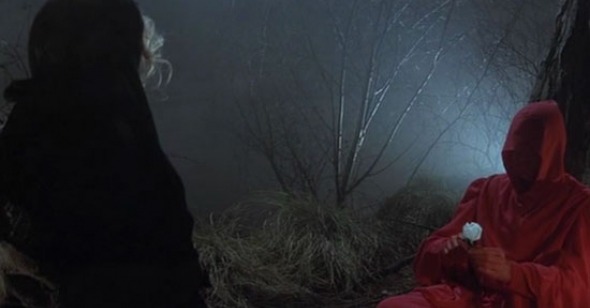First Night:
The Masque of the Red Death
To these tired eyes, the greatest development in horror cinema in 2011 was the lack of a new Saw sequel. Keep your severed fingers crossed that this isn’t just a fleeting instance of taste from Lions Gate Films, and that the swollen, unimaginative, and sadistic franchise is over for good. Not only were the movies impoverished and cynical, they were doing damage to American horror filmmaking itself, making the genre synonymous with its lowest-common-denominator torture supply-and-demand for a number of years. True horror fans should have been outraged. Of course, sequel-itis was alive and well, nevertheless, with yet another Final Destination film (accident porn turns me off even more than its torturous close cousin), another chance to cheapen-by-making-expensive the Paranormal Activity concept, and the odd spectacle of a fourth entry in the Scream series (and this after Wes Craven imposed a silly “trilogy” superstructure on his series circa 2000). And do we need to mention the usual crop of remakes? (I doubt I’ll ever have the stomach for the CGI update of The Thing or the time for a sexy redux of Straw Dogs; but Fright Night had its atmospheric charms before it devolved into unrestrained and hackneyed spectacle, and I’ve been told The Crazies isn’t completely worthless.)
What of contemporary original horror, you ask? Though James Wan’s Insidious appears to be the year’s breakout hit of the genre, and though it is an admirable and effective scare machine, shockingly adept at creating chilling images that stick in the craw, its overall conception and design is so derivative of so many horror “essentials” (plus, oddly, Star Wars Episode I: The Phantom Menace) that one would have to use some form of analytic astral projection to justify it as original. Stakeland has its fans, but I haven’t taken the plunge. So, despite one upcoming winner (which might just be a benchmark of British horror, and which I will expound upon later in the week), 2011 is a fairly bloodless state of affairs for anyone who wants to see something a little, well, different. Not too much to ask for, it would seem, but then again horror is a peculiar form, reliant as it is on certain expectations that must be met, and the admittedly limited arsenal of Things That Scare Us.
Thankfully, as with every Halloween, there’s a seemingly endless treasure trove of horror films from prior decades, and there are even still a handful in there that can take you by surprise. Imagine my happiness upon finally deciding to watch Roger Corman’s The Masque of the Red Death, the final film in the cycle of Edgar Allan Poe adaptations by the independent impresario, and, as shot by cinematographer Nicolas Roeg, the most sumptuous. Next to Corman’s more hearty narrative of The Fall of the House of Usher and even his jokey The Raven with Boris Karloff, Peter Lorre, and the director’s standby devil, Vincent Price, the 1842 Poe story The Masque of the Red Death might seem at first glance a particularly odd choice for adaptation: at little more than two-thousand words it’s more of sketch than a story, with no vividly drawn characters or perceptible arc. It’s intuitive and metaphorical, a remarkably evocative description of fear and pestilence as it descends upon the merry masked ball of the heedless Prince Prospero, personified in a red-cloaked figure of doom.
But in a visual sense, The Masque of the Red Death has perhaps the greatest potential of any Poe story for screen adaptation—clearly Corman and Roeg knew this, because the grimly glorious visual approach they take to the film comes right from the page. Read this extraordinary passage from the climax of the story: “He made his way uninterruptedly, but with the same solemn and measured step which had distinguished him from the first, through the blue chamber to the purple—through the purple to the green—through the green to the orange—through this again to the white—and even thence to the violet, ere a decided movement had been made to arrest him.” One would imagine Poe as a filmmaker before his time: the sense one gets from his writing is not of putting words on a page but of a preparing a screen treatment. Or maybe it’s more like a verbal splattering of paint on a canvas: reading Masque of the Red Death often feels like scanning your eyes across a Bosch painting. Corman, Roeg, and production designer Daniel Haller made the bloody good decision to use Poe’s color scheme as he so handily laid it out over a hundred years earlier: the pièce de resistance of the set is its hall of separately color-coded chambers, culminating in the forbidden black room of Poe’s nightmarish description.
Surrounding this ravishing set design and cinematography are the usual clunky Corman add-ons (Prospero is a sadistic Satanist; there’s a lovely young peasant maiden who serves as pseudo protagonist), but here the plot, largely subservient to the velvety visuals, is little more than a distraction from the inexorable trudge forward—to the moment we all know is coming from the opening scene, which shows us the hooded, scarlet grim reaper figure biding his time. When Price’s Prospero gets his comeuppance, Corman ensures we feel its full psychological impact. Yet even more narratively effective, perhaps, is the decision to graft a second Poe story, “Hop-Frog,” onto this one: while the parallel plot of a court jester (Skip Martin) exacting violent revenge on the Prince’s subject (Patrick Magee) who had tormented him, certainly seems superfluous in any traditional sense, it adds considerably to the film’s general sense of debasement, and provides its own narrative climax that perhaps even outdoes the film’s conclusion in disturbing imagery.
Corman has said that he was influenced greatly by Bergman’s The Seventh Seal when he made the film, and this is reflected not only in superficial ways (images of cloaked figures; the countryside ravaged by plague; the overall sense of a medieval fresco come to life) but also in existential ones, regardless of Corman’s comparably vulgar expressionism. The world on display is a diseased one, and not just because of the pestilence. In this sense, Death becomes a moral watchdog as much as a harbinger of the terrifying eternal, but, as the film’s coda shows, it’s not only the wicked who are destined to be smote. Perhaps there’s nothing we can do about that but join in the dance while we can. An acknowledgment of mortality in the guise of a mad costume ball? Sounds like Halloween to me. —Michael Koresky
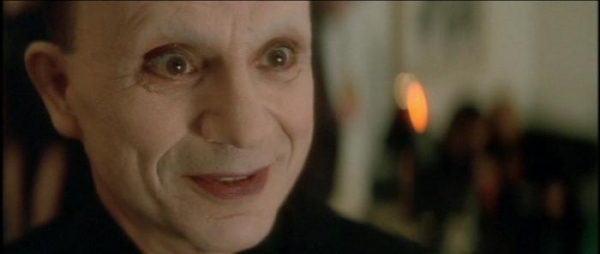
Second Night:
Lost Highway
David Lynch is not often thought of as a director of horror films, yet for the past 30-plus years he has given us some of the most genuinely terrifying imagery in American cinema. Taking into account all the horror movies that have come and gone in the past decade, and all the momentarily effective genres that have had their moment to cast their long shadow (J-horror, torture porn, shaky caught-on-camcorder mockumentaries), was there a scene more pit-of-your-stomach-and-soul dreadful than the one set at Winkie’s diner in Mulholland Drive? It’s not merely the scene-punctuating emergence of the monstrous man lurking out back—it’s the entire buildup, which functions on a palpable dream logic better than any I’ve ever seen attempted in a film. The two mysterious men at the booth; the haunted-looking one letting the straight-arrow know he asked him here just to talk about his nightmares; the fear that the man of his dreams is out there and the vague declaration that “he’s the one who’s doing it” (doing what?! ); the camera that seems to haphazardly float around them as they talk; the moment when the straight-arrow’s specific position when paying his bill at the counter brings to fruition the man’s dream world; and finally the inexorable walk out back: we know he will be there. He pops out, ghost-like, the sound sucks out of the scene save a muffled pulse, and we feel we’re having a heart attack along with the terrified character.
There’s something heartening to all us genre fans that the greatest film of the last decade contains a sequence so truly disturbing, and one that relies on (and perfects) the bizarre unreality and uncanniness that makes horror what it is. This scene alone (and the film’s climactic night terrors) might be enough to consider Mulholland Drive a horror movie, but before this Lynch made Lost Highway, which is clearly the closest the director ever got to making a bona fide horror film beginning to end. Though in its bifurcated structure and narrative of radically shifting identities, the film now feels like a warm-up to Mulholland, Lost Highway remains a remarkable film—and a remarkably terrifying one. Its first hour is perhaps Lynch’s most tonally sustained work, a cryptic, profoundly unsettling creepshow that functions as its own contained narrative of jealousy and surveillance and features some of the richest pitch blacks ever realized onscreen (the great cinematographer Peter Deming proves himself a true master of the dark arts here).
Like Mulholland, Lost Highway seems split into two sections, one connoting “dream” the other “reality,” and also like that later film, it severely complicates your perception of which is which by making what seems like the more logically “real” half move as though a dream, and vice-versa. But in Mulholland there were dreamy delights (sexual, musical, comically surreal). Lost Highway is a straight-up nightmare. Just synopsizing what goes on in the film sends shivers down the spine: moody saxophonist Fred (Bill Pullman) and his sultry and secretive brunette wife, Renee (Patricia Arquette), Los Angelenos who seem to live in a perpetual twilight, are receiving mysterious video cassettes in envelopes on their front steps. The first shows just a static-riddled image scanning the house’s exterior (there’s no way Michael Haneke wasn’t influenced by it in making Caché); this is paranoia-inducing enough for the couple, yet with each new anonymous cassette, the images are getting closer and closer, even coming inside the house—and watching them sleep.
Though Fred and Renee are clearly odd ducks (he’s already so frozen with paranoia regarding his wife’s possible infidelities that you can barely get an emotional read on him; she betrays nothing with her stoic features and somnambulant baby-doll voice), they radiate genuine fear about these circumstances—in fact, fear seems to be the only feeling they communicate to us. Arquette’s wispy delivery has never been better exploited for its narcotized creepiness, and Lynch captured something sinister in Pullman’s puffy, squinty handsomeness that no other director ever bothered to find. The entirety of their home seems bathed in black—rich and velvety honest-to-god black—to the extent that whenever we are there with them, we feel sucked into a grim netherworld, with only occasional flashes of light and color (usually a sourceless, dull red glow).
Their murky tale ends (and the rest of the film—a new film with seemingly new characters—begins) with shocking violence, but not before Lynch offers a scene that gives the Winkie’s sequence a run for its money in the creep sweepstakes. Fred has been dragged to a party at the home of a male acquaintance of Renee’s whom he eyes with suspicion. While milling about alone, he catches the eye of a male guest who looks more like a wraith than a man, let alone your average partygoer. As inhabited by a brilliantly cast Robert Blake, he is a hell of a sight with his shaved eyebrows, powder-white skin, and pouty, made-up lips. He insists to the incredulous Fred that they’ve met before. In Fred’s house. And in fact, he’s there right now, an impossible statement that he goes on to prove by dialing Fred’s home number.
This unnamed being will go on to preside over the rest of the film, appearing out of the darkness time and again. Whether man, ghost, or id, he seems to be pulling the strings. Lynch knows this goblin needs no official introduction. All that matters is, as the man in Winkie’s would later say, “He’s the one who’s doing it.” —MK
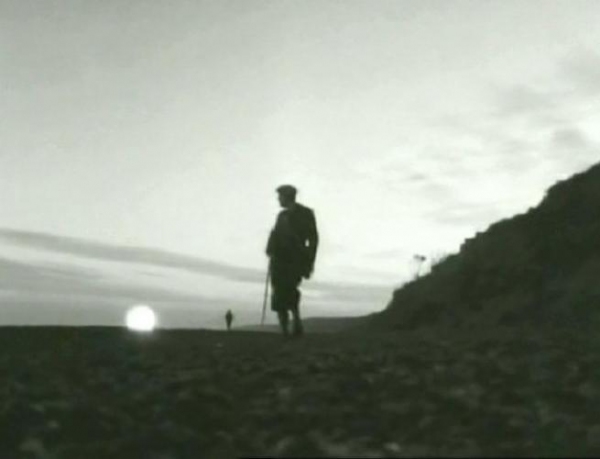
Third Night:
Whistle and I’ll Come to You
Imagine a horror film with no anticipation, no sense of danger, no foreboding, no inexplicable happenings, no haunted house, no droplets of blood or creaking floors, or ominous bass line on the score. Imagine no music at all.
What if there was only the fear itself? Would that work?
Jonathan Miller’s Whistle and I’ll Come to You, produced for BBC television in 1968, is a singular piece of horror cinema because for its first half, it eschews “atmosphere” almost completely. Minimalism is not really a sufficient description; absenteeism would be better. Miller harnessed one of the characteristics of the short ghost story, which is that it is often told by amateurs like a joke, providing only the essentials required for the punchline to work, and took this idea to a startling extreme. The resultant film is, to many, almost inexplicably petrifying.
Montague Rhodes James (1862–1936) was not just a writer of ghost stories but also a legendary teller of them. His tales were read by candlelight to a small group of friends every Christmas Eve in the rooms of Kings College, Cambridge, where James was vice-chancellor, and later to schoolboys at Eton College. So popular were they that they have never since been out of print. Read to oneself, or out loud to an audience, James’s stories are still deliciously effective today, and Miller’s monochrome version of James’s most popular tale, Oh, Whistle, and I’ll Come to You My Lad is both a reverent retelling and a subversion. For James delighted in descriptive atmosphere, painting vivid pictures of solemn landscapes and coloring complex characters with filigreed detail. James’s subtle, gradual build-up of tension is from the classical school of storytelling, but Miller (like James a Cambridge polymath, a qualified doctor, comedian, and director of radical English-language versions of classical Italian operas) takes this story to another place.
Michael Hordern plays the slightly pompous, fussy old eccentric Professor Parkin who retires for a sojourn in a guesthouse on the Kent coast. He is grumpy and self-absorbed, seeking solitude on the beach rather than acquaintance (James had written him as a more youthful, sympathetic character). After he finds a bone whistle in a graveyard bearing an inscription which he translates from Latin as “Who is this who is coming?”, he tests it out in his bedroom. After a couple of troublesome nights and an apparition on the beach by day, a chambermaid inquires in passing as to why both the beds in Parkin’s room have been slept in.
The film lasts 35 minutes and for the first 15 of them barely anything of note happens at all. Parkin unpacks his stuff, dresses for dinner, gives the brush-off to the other guests, wanders about the hotel slightly bored, and takes a bath. None of the hotel staff is creepy, none of the guests mysterious or deformed, none of them tells a story. There’s no storm and the electrics in the hotel work perfectly. The production design is unremarkable, the camerawork is stubbornly functional (the film was featured, oddly, in the BBC’s Omnibus series of documentary films and the same crew appears to have been used). The next morning, Parkin takes breakfast, refuses an invitation to play golf and goes for a windswept trudge along the coast. One assumes the season is late autumn. The overall impression is of the most tedious weekend imaginable.
Then, as the day closes in, a simple tracking shot shows Parkin looking behind him as he heads back to the hotel, and the reverse shot reveals a figure in the far distance, silhouetted against the sunset behind him, a figure to whom Parkin reacts not with alarm, but a sense of awkwardness—as if torn between social etiquette and his desire to be alone. This shot of the figure—repeated in a dissolve when Parkin first blows his whistle back at the hotel—is almost barren and immensely subtle, but it jumps out of the film because it exists at all. It is the first indication that something is amiss. The audience itself is now waiting for much more, but an entire day passes where Parkin returns to the beach and (whilst he has no sense of apprehension at all, we have plenty) sees nothing.
The attention to detail of large uneventful sequences in Whistle and I’ll Come to You roots it in the mundane reality of the rational man—it refuses any notion of “spookiness,” but places us inside Parkin’s (and our) rationalist world. It isn’t just the dramatic irony inherent in Parkin’s lack of fear or appreciation of danger that produces an effect of dread, it’s the lack of a traditional atmosphere of anxiety that is so completely oppressive. The crime writer Ruth Rendell said that M R James told stories “one wishes one had not read, in order to have the pleasure of reading them again” and for similar reasons it would be unfair of me to go into much more detail about Miller’s extraordinary film. Its approach may be poles apart from the printed version, but the message is the same, which is that a mind so rational and confident as to deny the possibility of unseen forces is a mind that can only be irretrievably damaged when such forces manifest themselves. In this, James no doubt saw a self-serving Pascalian mantra for a teller of ghost stories who wants to keep his audience—it’s surely safer for you to believe in ghosts, because if you don’t, how will you cope when they appear? On top of this, Miller realized that fear itself can be even more powerful if it comes from within a rational mind, without explanation, without assistance, and without rules. —Julien Allen
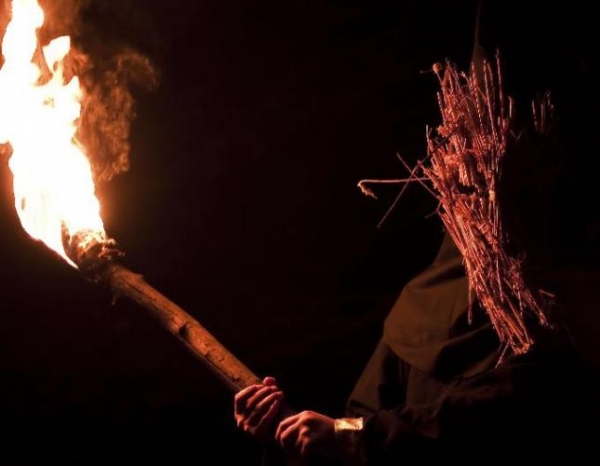
Fourth Night:
Kill List
Some horror movies send you off into the dark night giddy with fear and pleasantly reeling from revulsion. Others give you a glimpse of something so dark and bleak that you’re left with a queasiness in the pit of your stomach. What you witnessed was not in any traditional sense enjoyable (outside of the momentary thrills one can get from the exhilaration of shock), yet you’re moved. It managed to burrow to someplace not only grim but that you hadn’t really thought of before. Films like this are so rare—Psycho, The Wicker Man, Salò, The Blair Witch Project—that they tend to be later regarded as benchmarks for the genre. Who knows if Ben Wheatley’s phenomenally upsetting Kill List will ultimately follow in their forbidding footsteps, but from my point of view it has the potential.
As had been noted regarding his previous feature, Down Terrace, Wheatley kills at subverting genre expectations. In this new film—coming out in early 2012 from IFC Films—he’s adding an occult horror element to two tried-and-true Brit formulas, the hit-man film (already a bit of an amalgam with its thriller and character-study qualities) and the kitchen-sink drama. Though it starts off in a domestic realm, Kill List is immediately jarring, as the wicked slash-and-burn fights of a seemingly average middle-class couple—Jay (Neil Maskell) and Shel (MyAnna Buring)—radiate an alarmingly sadistic vibe that goes well beyond any normal married sparring. And Wheatley and cinematographer Laurie Rose keep the camera too close for comfort—but at enough of a distance that you don’t feel like your nose is being pressed into the muck: there’s still an eerie omniscience to these scenes that puts the viewer immediately on the defensive. A threat hangs in the air that seems to exist outside of the already volatile characters—for much of the film one wonders exactly where that threat is coming from.
Clearly it could come directly from Jay himself, whom we eventually discover is a contract killer by trade. This is revealed only gradually, shedding disturbing new light on the quarrels over money and career he had been having with Shel in the opening scenes (the tenor of their argument notwithstanding, he might as well have been defending his work as an insurance salesman for all we knew). In fact much of what we learn about Jay comes in bits and bobs, and much of it unresolved and lacking overt psychologizing: we know he is a veteran of the Iraq War, and that eight months ago, something happened during a job in Kiev. Needless to say, audience identification with this killer is severely complicated, as he comes to seem alternately a loose cannon and a cool, calculated criminal. Either way, he loves his wife—despite his intense, borderline mutually abusive fights with her—and his young son. So when he and his partner and best friend, Gal (Michael Smiley), get involved in some seriously shady dealings with a fearsome new client, we do, in a sense, care what happens. Yet the deeper and darker the plot gets—and the further it veers into shudder-inducing horror territory—the less are we concerned with Jay’s safety than our own. Wheatley’s world is an unpredictable and dangerous place, and we don’t feel protected: a late-film change in terrain is terrifying not just for the clearly “scary” ingredients in which the director expertly indulges (pitch-black woods, hideously masked strangers, bizarre ritualistic behavior) but also because it’s unclear how they will be deployed, and what it’s all leading up to.
The answer is both maddeningly vague and gut-wrenchingly clear—the closing moments in the film are somehow able to grant the film that finishing-touch “aha!” while also leaving so many troubling questions. This is because Wheatley is working, brilliantly, in two registers, enveloping us in the authentic behavior of vivid characters and then unleashing them in an unsettling land of metaphor. This is highlighted in the way each of the targets on their kill list, announced with large-font title cards, stands in for some echelon of British society (“The Priest,” “The Librarian,” “The MP”—shades of Pasolini’s Salò, whose villainous libertines—known only as Duke, Bishop, Magistrate, and President—are destructive social forces rather than actual characters). They seem to be working their way up the list—but in reality they’re working their way down, in Jay’s case all the way back to where he started. By the time Jay and Gal are running for their lives through a stygian tunnel on the outskirts of a gated rural mansion, we seem to have left reality all together.
This doesn’t stop the appalling conclusion from hitting home—hard. As with all great horror movies, there’s something inexplicable that occurs, yet it has real-world ramifications. Kill List is ultimately a wrenching cry of despair for a world in which kindly gestures seem long forgotten—the film has plenty of polite “thank you’s” and it ends with a smile you’re unlikely to shake. But these are merely the signals of a world made upside-down—by war, by economic struggle, maybe by the devil himself. —MK
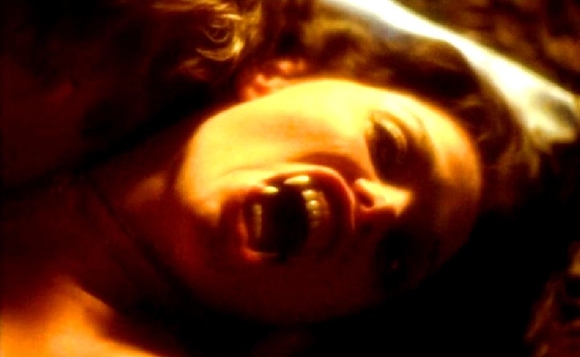
Fifth Night:
The Howling
“Repression is the father of neurosis,” chides Patrick MacNee in the first clearly audible moments of The Howling (1981). Fortunately, Joe Dante’s never been one to hold it all in. This is, after all, the guy who unleashed not one but two sets of crazed Gremlins (and a squadron of homicidal plastic G.I. Joe knock-offs) on multiplex audiences, the guy who first made his named with something called The Movie Orgy. If the werewolf genre is all about giving over to the beast within, then movie-brat Dante would seem to be an ideal to candidate to helm an all-out howler.
And yet The Howling isn’t nearly as zany as the rest of Dante’s films. It has a finely controlled script by John Sayles, who, long before his enshrinement as the (social) conscience of the Amer-indie movement, was trying to Say Something: namely, that in an over-saturated mediascape populated by chattering pop psychologists, slavering TV personalities, and cartoonish advertisements, the sudden, on-camera transformation of a human being into an honest-to-goodness monster would seem pretty de rigueur. (That’s the film’s punchline). Dante would further mine this vein in his amazing contribution to Twilight Zone: The Movie, “It’s a Good Life,” which imagined a world at the whim of a TV-addicted boy, but without the undergirding of Sayles’s (blessedly humorous) cynicism. In The Howling, these two very different film artists found a wonderfully wobbly equilibrium.
Delicious details abound, like the sticky smiley face that greets crusading reporter Karen White (a pre-E.T. Dee Wallace Stone) as she skulks around on a search for the predatory serial killer “Eddy”; it’s the last good news she’ll get for the entire movie. Karen’s trauma at finally encountering her quarry—and seeing him shot to death in a peep-show theatre (strange shades of 1981’s other canonical werewolf film)—is what leads her to the Colony, a primal-scream commune that is so obviously host to an ancient, lurking evil that John Carradine feels obliged to loiter on the premises. The scenes where the Colony’s residents (including voracious, fanged nymphomaniac Elisabeth Brooks) meander around beachfront bonfires are all-out spoofs of New Age trendiness, picking up on Philip Kaufman’s joke in Invasion of the Body Snatchers (1978): self-actualization as unholy mutation. MacNee’s mellow, platitude-spouting psycho-babbler is a mirror image of Leonard Nimoy’s alien headshrinker from that film.
Dante’s gifts have always been for wry juxtapositions and skillfully recontextualized pop detritus, but he’s not much of a shockmeister. The Howling’s centerpiece scene, in which a lycanthrope played by Robert Picardo literally offers a victim a “piece of his mind,” attempts the same sort of real-time, snout-sprouting metamorphosis that Landis managed in An American Werewolf in London, but the director’s ever-present grin undermines the nightmarish visuals. (During another scene, he can’t help cutting between a “Three Little Pigs” cartoon and a flesh-and-blood mutilation). Pino Donaggio’s score tries its darndest to give Karen’s recurring nightmares a Carrie-ish kick, but Dante has no talent for the woozy, voluptuous imagery of a Brian De Palma (whose Blow Out, from the same year, did more with a serial-killer subplot). What he does do, brilliantly, is cram the frame with blink-or-miss-’em details (like a tiny reproduction of Munch’s “The Scream” in MacNee’s office) that heighten one’s film-going senses in a way distinct from—but no less pleasurable than—all-out terror. He’s irrepressible: a reflexive gag artist who’s having too much fun to really go for the throat. —Adam Nayman
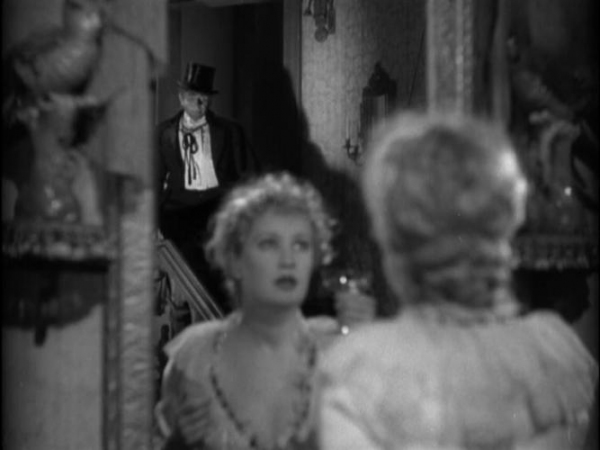
Sixth Night:
Dr. Jekyll and Mr. Hyde
Because Fredric March won the best actor Oscar for his double-role as the twin protagonists in the 1931 Dr. Jekyll and Mr. Hyde, the film is primarily remembered for his performance. Yet to ignore the astonishing filmmaking on display by the great Rouben Mamoulian is to miss one of the most elegant, technically audacious Hollywood horror films of all time, not to mention one of the most truly dangerous. This is definitely pre-Code stuff: a flash of nudity, sure (from madman's prey Miriam Hopkins, in bed), but also a surprising rawness in its violence and a vivid anger permeating its every shock. It feels particularly fresh today in the way it dares to go deep—not into the psychology of its two-faced protagonist, but into the animalistic undertones that permeate Robert Louis Stevenson's original story and that influenced every "dual side of man" tale that popped up in its wake.
As a filmmaker in an era when talkies were new, Mamoulian clearly had free reign to try new things. And this being his second film (after Applause), he pulled out all the stops. The film begins with an extended, extreme point-of-view sequence, in which we see Jekyll's house through his own limited eyes, even as he walks up to the mirror to get ready to leave for a lecture. The claustrophobic images set us up for an awkward identification with the good doctor, as well as give us a fluid, maze-like sense of the laboratory and house in which he will turn himself, inadvertently, into a tragic character. This is gorgeous work by cinematographer Karl Struss (Island of Lost Souls, The Great Dictator), and throughout the film he's always putting the camera in surprising places—not only did he make expressive use of the frame, he seemed to really understand horror cinema in a preternatural way; there's nothing scarier than a hushed, detached camera resting quietly while the monster enters blurred in the background, creeping closer.
And in this film's case, we don't want to see him. The justly celebrated makeup by Wally Westmore, and the incredible visual effects that change the debonair March into Mr. Hyde (here a sort of ape-like id) are astonishing still—perhaps the most groundbreaking and terrifying transformation scenes until 1981's An American Werewolf in London, achieved with dissolves and invisible cuts. Once Jekyll becomes Hyde, all trace of the former man is left behind—it really looks as if the monster has eaten him whole. And Mamoulian and March wisely try not to make the monster an enjoyable ham, as others have—this is a deeply upsetting creation, and the way he abuses his prostitute victim, Ivy Pearson (Hopkins, who's poignant throughout), remains jarring.
And of March himself: yes, the Academy Award was well deserved, not only because he so completely inhabits the monster with that unutterable danger and a surprising athletic grace but also because his Dr. Jekyll seems like it's inhabited by a completely different performer. The fact that he won the best actor Oscar for his work (in the awards' only tie in that category; he shared it with The Champ's Wallace Beery) also serves as a reminder of how scared the Academy soon became of horror. Or perhaps the better word is dismissive. Horror isn't easy, either for the filmmakers or the actors throwing themselves whole hog into it. They are the ones who are the most severely underappreciated; what no Oscars (not even nominations) for Anthony Perkins in Psycho, Mia Farrow in Rosemary's Baby, or even Dee Wallace in Cujo? Dr. Jekyll and Mr. Hyde shows 'em how it's done in more ways than one. —MK
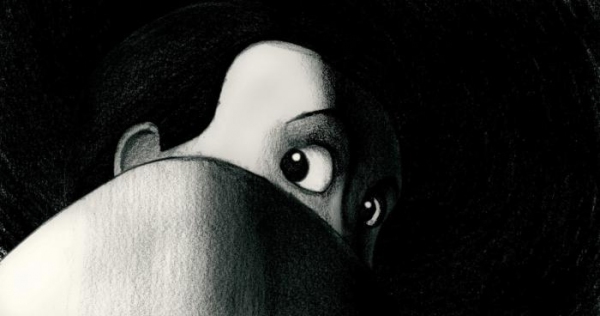
Seventh Night:
Fear(s) of the Dark
It’s commonplace to bemoan the sad reality that animation has been so long considered a children's medium. The limitless possibilities for expression and beauty and terror and surreality offered by the form make it frustrating that it has been co-opted by the gatekeepers of kids’ entertainment. Every once in a while, a Persepolis or a Waltz with Bashir comes along and reminds people that animation is, shockingly, not just for tots.
Of course, it’s impossible to not connect even those films to being young, as there’s an inherent picture-book quality to them that recalls for us those stories of our childhood, that gives us a sense of flipping through detailed pages. Their images have an emotional impact different from what words can summon. The spareness of our children's books is what lends them their specific atmosphere, quite different from the more overcrowded frames of graphic novels. There’s a painterly minimalism at work in the best storybooks, one which was harnessed extraordinarily for the exquisitely designed and uniquely unsettling 2008 French-produced anthology film Fear(s) of the Dark. A selection of animators, including Charles Burns, Blutch, and Marie Caillou, contributed horror-themed shorts, all of them in black-and-white, though of varying tones. Naturally, the result is a hodgepodge, and since Burns is perhaps the best known of the animators, his segment, the first, a psychosexual transformation tale that’s part of erotic fantasy, part Cronenbergian body horror, has been the most discussed. It's a neat trick, but if the viewer sticks it out for the final two segments, they’re in for the real treats. It’s in those two—Lorenzo Mattotti’s “The Great Plains” and Richard McGuire’s “Light and Dark”—that Fear(s) of the Dark lives up to its haunting title and also to the eerie uncanniness of the best children’s picture books.
“The Great Plains” has the feel of a Chris Van Allsburg twenty-pager—it’s like his legendarily creepy and ambiguous The Mysteries of Harris Burdick mixed with a simple French folk tale. In it, a man remembers an odd summer spent in the countryside when he was a boy. It is animated with simple black lines and charcoal. The narration is hushed and oddly nostalgic even as it’s tinged with fear. The tale is diffuse and doesn’t seem to have any sort of traditional arc. It is either about a monster or a serial killer, but is also concerned with a strange friendship mistily remembered, and it never resolves any of its strands, instead preferring a straight dose of atmosphere. And what atmosphere: “The Great Plains” is chilling and terrifying in almost inexplicable—and scarily unsatisfying—ways, and every image is astounding. One scene, in which a goose is tethered to a stake in the ground as a sacrifice to the unseen killer, is remarkable in its quiet dissolves and use of inky darkness. Watch it at night with the lights off.
And be sure to keep them off for the film’s pièce de resistance: in telling a stripped-down, wordless haunted house story, McGuire’s final entry features such an inventive, elegant use of its unvaried contrasting tones that you may feel as if you’ve never looked at black-and-white animation before. It’s all there in the title: you have light and dark (mostly dark) and nothing in between. A wandering man enters a blacked-out, strange house seeking refuge during a blizzard. Inside, he discovers, with the help of a single candle, that the place has a violent history—which comes back to haunt him, in dream and reality. That something so simply conceived and expressed can seem so singular is indicative of a clearly special artist. The flower patterns on a woman’s dress; the thin lines of a spider’s legs scurrying across a table; a gleaming butcher’s knife; terrifyingly altered photographs from an album; an endless splinter being pulled out of the meaty part of a hand—these are all amazing standalone images, but the way McGuire combines them into a fluid narrative is what’s most impressive. There’s an emotional aspect to what we’re watching. It’s not that we’re necessarily concerned for the well-being of the nameless man wandering through this haunted house—McGuire exploits our fears of the dark so elementally that we’re terrified just the same. It belongs in the canon of scary animated shorts, along with Fantasia’s “Night on Bald Mountain,” Ted Parmelee’s 1953 The Tell-Tale Heart, and Richard Williams’ 1971 A Christmas Carol. Make it the last thing you watch before bed tonight. —MK
